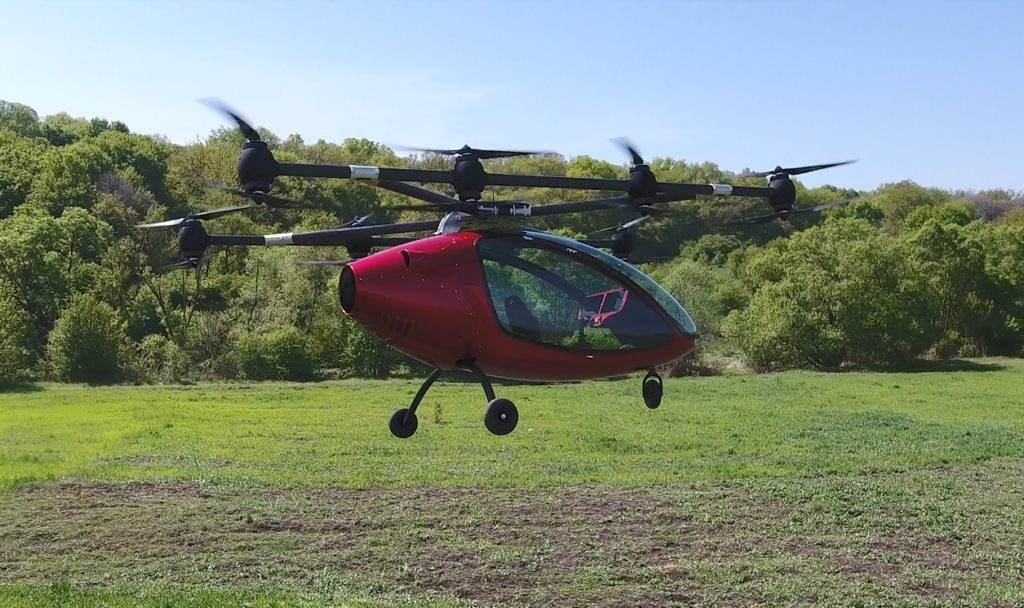When you’re a company attempting to get noticed in a market quickly filling with competitors, choosing a name is important. Ideally, you want to go with something that communicates your proposition effectively. If that name can help you rank highly in search engine results, well that’s a bonus. Enter Passenger Drone, the latest startup to enter the race for an autonomous aerial taxi service.
To be honest, we don’t know very much about Passenger Drone at the moment. We don’t know where the company is based, how it’s funded or who it’s owned by. But what we do have is this footage (above) of successful testing, which was posted on Youtube in line with the company’s official launch a couple of days ago.

One interesting statement we found from the website:
“Also, our aerial vehicles can be 100% remotely controlled by our Ground Control and Monitoring Center, allowing an operator located as far away as the EU or Asia to fly a North America-based aircraft safely and efficiently.”
We’re not sure what the benefits are of having these drones operated from the other side of the world, but hey, it’s an interesting feature. Even if it is likely to cause concerns about safety and control.
Passenger Drone: The Specs
Here are the specifications for the Passenger Drone that are listed on the website. Most notable are the top speed (45 mph) and the flight time (20-25 minutes), which would give the drone a range of several miles – easily enough for urban pick-ups and nearby drop-offs.
The drone can take off, land and perform all stages of flight completely autonomously, guided securely via LTE (4G) network or the pilot onboard. It has 16 electric engines, is low-noise, economical and emits zero emissions.
- Empty Weight ( including batteries) : 240kg ( 520lbs)
- Maximum Take Off Weight: 360kg ( 800lbs)
- Maximum Thrust : 560kg (1230lbs)
- Maximum Payload : 120KG ( 270lbs)
- Maximum Speed: 60-70km/h (45mph)
- Flight time: 20-25 mins (without range extender)
- Dimensions (L x W x H): 4200mm x 2300mm x 1800mm (165″ x 90″ x 70″)
- Two Passenger Seats
- 16 Engines and Propellers
In a statement, the Passenger Drone team said:
The aircraft commenced flight testing in early May 2017 and for the last few months has performed intensive testing with different simulated payload weights, simulated engine failures and different control modes. In August 2017 first manned flights with passengers onboard took place and the results and passenger feedback is overwhelming – the Passenger Drone is very easy to fly in both manual and autonomous modes and it shows amazing stability and maneuverability.

Passenger Drones On The Way
The idea of an on-demand flying vehicle service was science fiction a few short years ago. But the space has been rapidly developing, despite the fact that regulators and aviation authorities don’t seem to know how or if these services will fit into the airspace.
There are obvious holes in current regulations that restrict the testing of these flights, let alone their commercial operations. These include limits over beyond line of sight operations, weight restrictions and issues over who controls the aircraft.
But it appears as though these questions marks are not going to stop companies from pushing ahead with ambitious plans. VTOL passenger drones are currently under development at Uber, Airbus, Ehang and Lilium – to name a few.
We’ve reached out the Passenger Drone team and will update this post when they get back to us.
Malek Murison is a freelance writer and editor with a passion for tech trends and innovation. He handles product reviews, major releases and keeps an eye on the enthusiast market for DroneLife.
Email Malek
Twitter:@malekmurison
Subscribe to DroneLife here.







[…] Source link […]